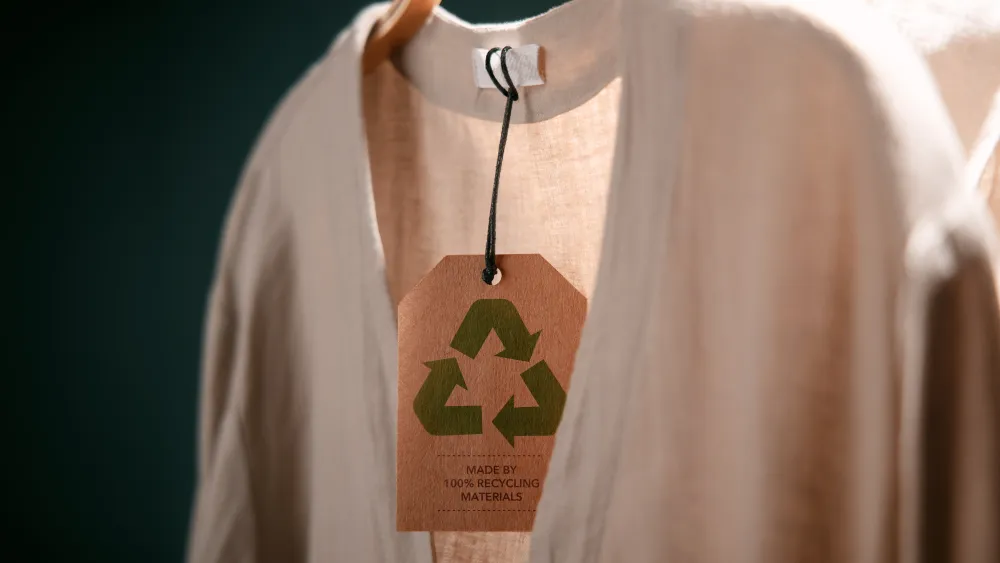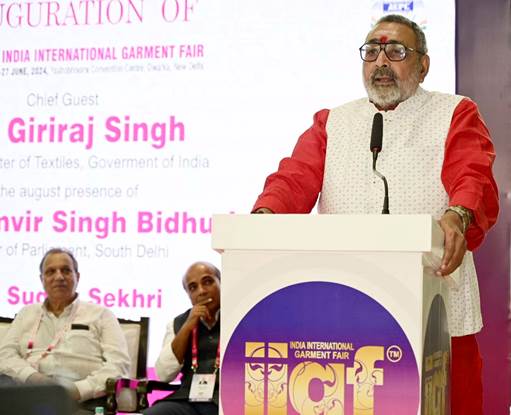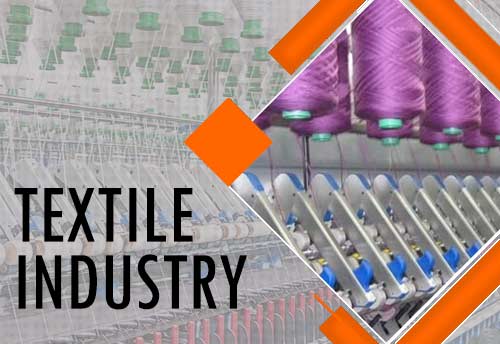FW
Demand for antimicrobial fibres, textiles and apparel is expected to grow in a big way, says Textiles Intelligence in its issue on Performance Apparel Markets. Demand will be spurred primarily by growing awareness among consumers about the importance of personal hygiene and health risks posed by certain microorganisms.
Also, the promotion of healthier and more physically active lifestyles will drive demand, as consumers look to purchase sportswear and fitness apparels with antimicrobial properties. Moreover, greater use of fabrics, particularly cotton, which are prone to harbouring large bacterial colonies will present opportunities for antimicrobial fibres, textiles and apparel, the report said.
It further added that between 2013 and 2018, the global market for antimicrobial agents for all end uses, including textiles, is forecast to grow by nearly 12 per cent, per annum. However, there is concern among consumers that some agents used to provide textiles and apparels with antimicrobial properties -- notably silver nanoparticles and triclosan, are toxic. Such agents can become dislodged from a textile during laundering and thereby pollute water sources. Also, they can come into contact with the skin and cause skin irritation.
Amid these concerns, manufacturers are stepping up their efforts to develop effective and durable antimicrobial technologies which are less likely to be harmful to human health and the environment and which comply with environmental certifications. As a result of such developments, antimicrobial products which are likely to record the strongest gains in sales over the coming years will be those that offer the highest efficacy and durability while posing little or no threat to the safety of consumers or the environment, report said.
www.textilesintelligence.com
The European Committee of Textile Machinery Manufacturers, CEMATEX, has announced that it will provide a grant to all participants of the Research & Education Pavilion at ITMA 2015. Owing to strong response and positive feedback following its initiative at ITMA 2011, the committee has decided to continue to provide the grant to pavilion participants at ITMA 2015. The ITV Institute of Textile Technology and Process Engineering Denkendorf, Germany, is among the first to support ITMA 2015.
The Research & Education Pavilion at ITMA 2015 will continue to provide outstanding opportunities to research organisations and higher institutions of learning to share their R&D achievements, as well as current and future projects with the industry. In addition, the pavilion will feature a ‘Speakers Platform’ for participating institutes to share their latest knowledge and projects.
A technical committee is being formed to select presentations for the ‘Speakers Platform’. The Research & Education pavilion provides a platform for ITMA visitors to keep abreast with the latest research projects on garments, home textiles as well as technical textiles and nonwovens. The pavilion was a major feature at 2011 ITMA exhibition in Barcelona, Spain with 48 exhibitors from 20 countries taking part.
ITMA 2015 will be held from November 12 to 19, 2015 at Fiera Milano Rho in Milan Italy. Owned by CEMATEX, ITMA is the world’s largest textile and garment technology showcase, which being organized since 1951. The European Committee of Textile Machinery Manufacturers (CEMATEX) comprises national textile machinery associations from Belgium, France, Germany, Italy, Netherlands, Spain, Sweden, Switzerland and the United Kingdom.
Polyester has become China's new stockpiling strategy as the country is gearing up for a future where cotton, with its potentially sizeable environmental footprint, will become increasingly scarce and could increase significantly in price.
China’s polyester filament capacity has been rising. It was up 17 per cent in 2013 with another 8 per cent rise expected in 2014. Recent years saw China stockpiling cotton in a move to protect Chinese farmers from world prices and volatility while also maintaining a supply of cotton to its own industry. However, the country is now reducing its stock piles, and these new figures for polyester suggest it sees manmade fibers as where the future lies.
China’s polyester capacity is easily outstripping global mill consumption. In 2013, it was 5 per cent above global mill consumption, and by 2015 it’s expected to be 12 per cent above. In nylon filament China’s capacity is growing more quickly than global mill consumption, being forecast to represent 70 per cent of world nylon filament demand within the next two years.
In 2013, global polyester consumption was 6 per cent up on the previous year, a rate of increase that is also expected for 2014.
Fashion SVP and Future Fabrics Expo will be held from September 28 to 30, 2014, in London. Future Fabrics Expo showcases sustainable textiles with reduced environmental impact. It highlights best practice production and finishing processes. The expo works to demonstrate how the fashion industry’s environmental impact can be lowered through innovation in the textile sector, and change the outdated image of sustainable materials. It provides an opportunity for visitors to discover the latest in sustainable fabric innovations in a comprehensive curated showcase. It presents buyers with the latest in sustainable and innovative fabrics.
Fashion SVP is a UK fashion sourcing event. One of the key elements of Fashion SVP is to introduce creative solutions to European sourcing professionals, and to champion environmentally responsible production. The event sees an increasing commitment each year from high volume as well as designer and niche brands to lower their environmental impact.
Future Fabrics Expo is hosted by The Sustainable Angle. This is a non-profit organization, which initiates and supports projects which contribute to minimizing the environmental impact of the activities of industry and society. It helps companies minimize their environmental impact through making more informed design and fabric choices and increasing their use of sustainable materials via the annual Future Fabrics Expo showcase, the year-round online Future Fabrics Virtual Expo, and sustainable fabric sourcing workshops for designers and brands.
GFT 2014, the ASEAN show for garment and textile manufacturing industry, will be held from June 26 to 29 in Bangkok. This is a one-stop single platform to showcase the latest textile and garment machinery and technologies. It’s a meeting place for buyers and sellers of machinery and is also an interactive platform for participants to gain new experiences and generate business through a series of onsite activities.
Visitors to GFT 2014 can identify and learn about new products and solutions, understand industrial trends, study how cutting edge technologies can enhance their productivity, network and build new contacts and observe competition. Held along with GFT 2014 is the Garment Manufacturers Sourcing (GMS) 2014 expo, Asia’s sourcing center of fabrics, sewing trims, packaging materials and supporting services. GMS will feature fittings and accessories for garment and textile production from international providers.
The two events will provide outstanding opportunities for professionals to discover a wide and comprehensive range of machinery, technologies and accessories ranging from spinning, weaving, dyeing, printing to finishing machinery, embroidery to knitting machinery, sewing and cutting machine, iron system, laundry equipment, CAD/CAM and fabrics, apparel accessories. GFT and GMS 2014 will welcome more than 16,500 domestic and overseas visiting industry professionals to network with 270 leading brands from 25 countries.
www.garmenttextile.com/
The global work wear market is projected to reach $47.4 billion by 2020, driven by rapid consumption in emerging markets and technological advances in fabrics and functionality.
Work wear comprises various categories including basic work wear, technical wear, corporate wear and protective wear. The gradually reviving construction industry, steady growth in food service industry and the expanding healthcare sector along with subsequent rise in employment in these sectors are all contributor to the growth of global work wear market. Rising emphasis on worker health and safety issues, stricter government mandates, technology innovations, and increasing pressure to reduce costs associated with workplace related injuries, disability and death will drive future growth in the market. Encouraging gains in global manufacturing are also signaling an optimistic outlook for work wear given its use in diverse manufacturing industries.
Work wear fabric innovation is an important focus area among manufacturers. Recent fabric innovations poised to benefit the market include Tencel, a fabric made of eucalyptus pulp, and Synergo, a soft-shell stretch fabric. Also, the preference for green and environment-friendly apparels is expected to grow in the long-run. Supported by technological advances in manufacturing and product designing, performance apparel with features such as moisture-wicking, anti-bacterial and anti-infection properties is expected to witness steady growth over the next few years.
ACIMIT, the association of Italian textile machinery manufacturers, and ICE, the Italian trade agency, will take part in the 2014 edition of Techtextil North America from May 13 to 15 at Atlanta, Georgia. The associations have organised a meeting point where 13 Italian machinery manufacturers involved in the production of machines for technical textiles will showcase their innovative solutions. Techtextil North America showcases the latest Italian technology for technical and innovative textiles. Key US markets have seen a rise in demand for technical and innovative textiles.
The US market for specialty fabrics and technical textiles registered a 2 per cent growth in 2013, and the projections for 2014 are also positive. In 2013, Italian sales of textile machinery reached €72 million, an increase of 4 per cent compared to the previous year. In 2013, the most relevant share of the Italian machines exported to US was for the finishing sector (30 per cent), followed by accessories (28 per cent).
ACIMIT represents an industrial sector comprising around 300 companies and producing machinery for an overall value of €2.3 billion, with exports amounting for 84 per cent of total sales. Italian textile technology is sold in about 130 countries worldwide.
www.acimit.it/
ACIMIT, the association of Italian textile machinery manufacturers, and ICE, the Italian trade agency, will take part in the 2014 edition of Techtextil North America from May 13 to 15 at Atlanta, Georgia. The associations have organised a meeting point where 13 Italian machinery manufacturers involved in the production of machines for technical textiles will showcase their innovative solutions. Techtextil North America showcases the latest Italian technology for technical and innovative textiles. Key US markets have seen a rise in demand for technical and innovative textiles.
The US market for specialty fabrics and technical textiles registered a 2 per cent growth in 2013, and the projections for 2014 are also positive. In 2013, Italian sales of textile machinery reached €72 million, an increase of 4 per cent compared to the previous year. In 2013, the most relevant share of the Italian machines exported to US was for the finishing sector (30 per cent), followed by accessories (28 per cent).
ACIMIT represents an industrial sector comprising around 300 companies and producing machinery for an overall value of €2.3 billion, with exports amounting for 84 per cent of total sales. Italian textile technology is sold in about 130 countries worldwide.
www.acimit.it/
Lectra, a leading player in integrated technology solutions catering to industries using soft materials like fabrics, leather, technical textiles and composite materials recently organized ‘Lectra Fashion Seminar’ in Bordeaux-Cestas (France). Fashion companies from around the world got an opportunity to learn how Lectra’s innovative approach can help reduce costs while maximizing quality, with a new focus on lean development and manufacturing.
The event hosted 70 delegates representing 40 fashion and apparel companies from Europe, North America, Africa and Asia at Lectra’s International Advanced Technology & Conference Center, in Bordeaux, France. This seminar explored how businesses can use best practice expertise and technology to improve the fashion and apparel development cycle and optimize workflows.
Lectra showcased a host of solutions such as design, product lifecycle management (PLM), pre-production and production, which are applied according to a customer’s specific process among others. Live demonstrations of Lectra’s end-to-end approach were presented to the audience.
Lectra experts shared knowledge on the changing landscape of fashion market and increasing urgency to align front-end process with pre-production and production to increase design and style options, understand costs and generate substantial material savings was appreciated by the attendees. In addition to areas of bottom-line improvement, demonstrations also provided a look at how design, 3D and collection management technologies can be leveraged to create top line growth opportunities.
BTSR will be focusing on promoting innovative yarns storage and feeding solutions at leading trade fairs this year. The Italian company has recently introduced disruptive Unifeeder technology that aims to displace current state-of-art of yarn storage feeding technology and is destined to dramatically impact the socks, hosiery and knitted textiles manufacturing sectors.
Unifeeder is a new multi-patented concept featuring a brand new Yarn Antitwist System which guarantees total combined yarn feeding and storage control. BTSR says this represents the first ‘positive storage’ feeder concept which has been introduced to the market.
Unifeeder technology includes input yarn breakages and knots detection control as well as yarn tear compensation, providing real-time machine stop signalling and preventing needles breakages, yarn waste and second rate production. The machine is said to feature minimized size and weight – 50 per cent smaller and lighter than traditional storage feeders - allowing the simplest and most cost saving installation configurations.
BTSR aims to offer great value to its customers worldwide with its widely reaching international distribution network covering more than 40 countries from Europe to North and South America as well as the Far East.
www.btsr.com












